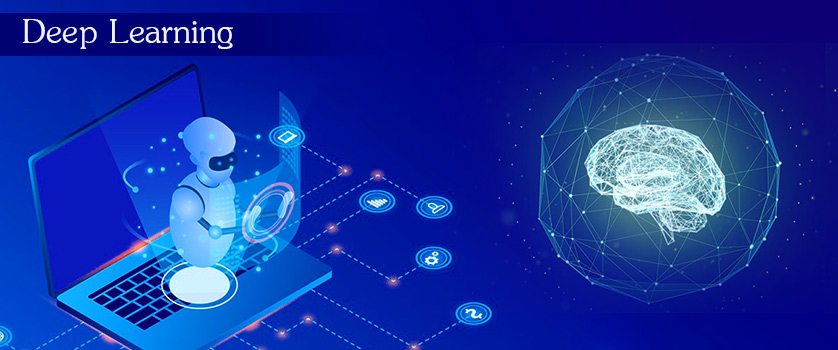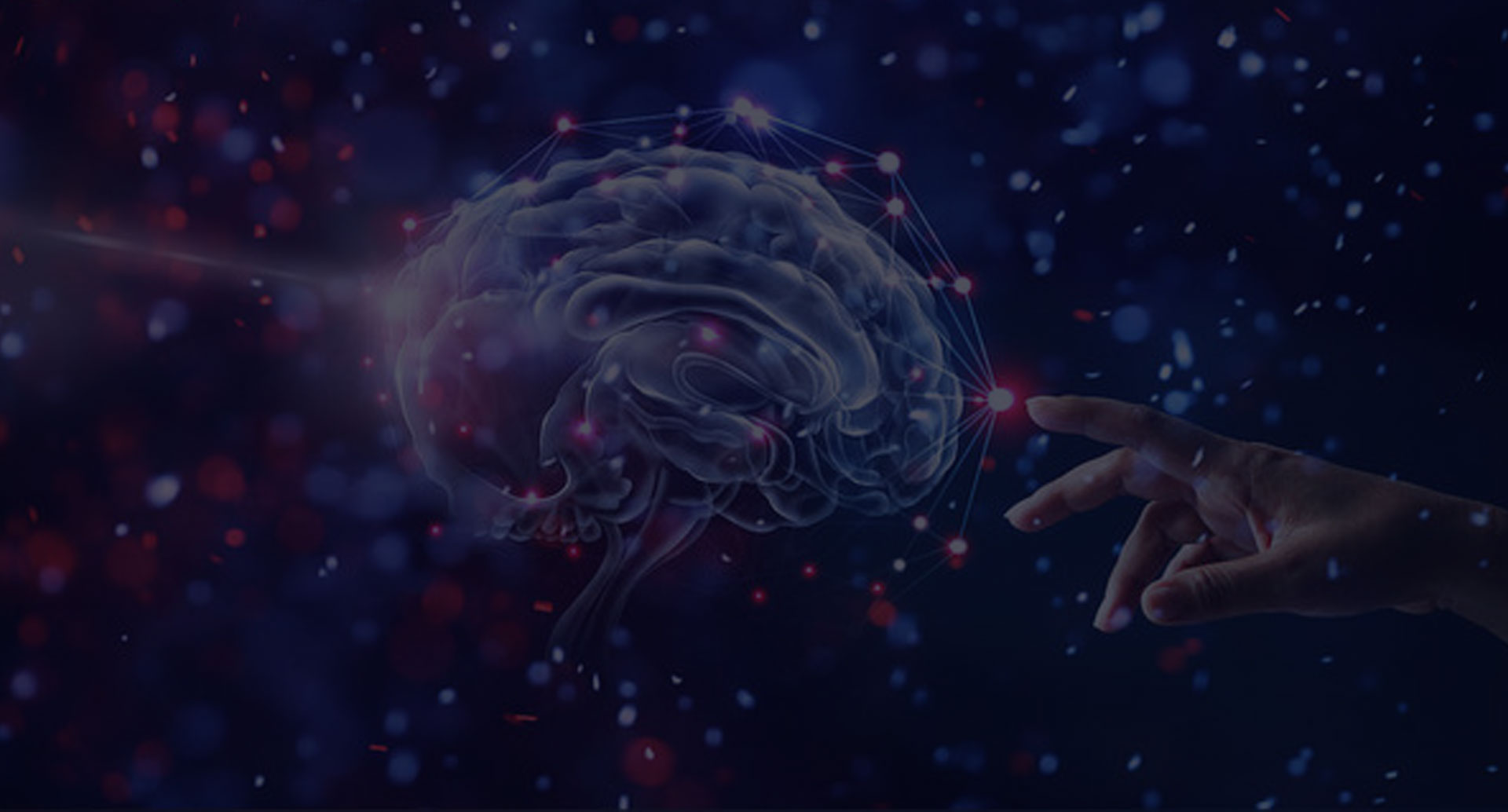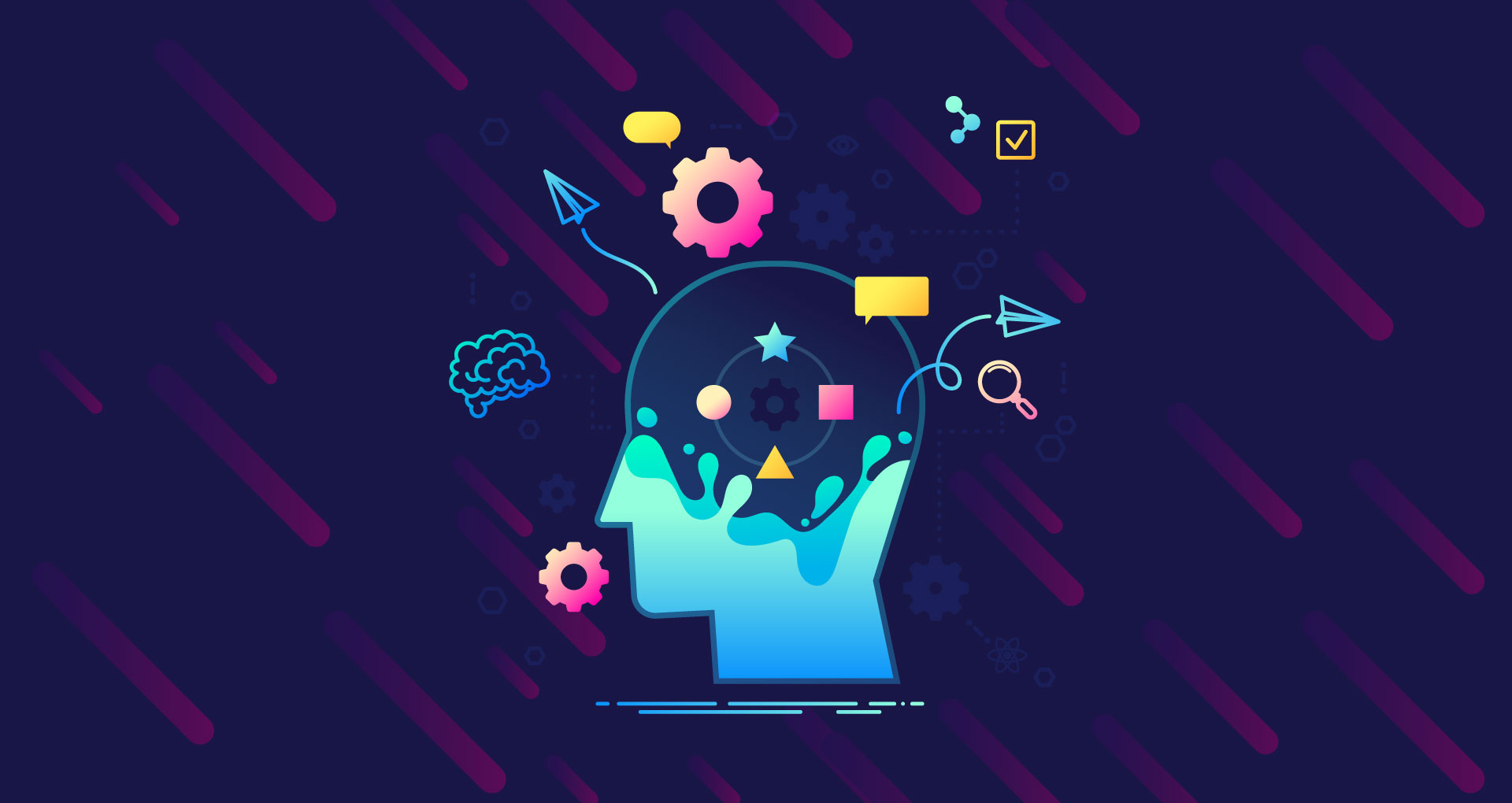
Anshul Jain
April 17, 2020
Introduction:
The recent evolution and improvement in Artificial Intelligence (AI) inaugurated a new, more futuristic digital era, where technologies like machine learning, deep learning, natural language processing, etc. are simplifying day-to-day activities. Moreover, organizations worldwide are leveraging their capabilities to develop systems to enhance various processes, like web searches, content filtering, e-commerce recommendations, features in self-driving cars, etc. Deep Learning, a subset of machine learning, is one important technology used by industries, as it makes machines capable of identifying objects in images, transcribing speech into text, matching news items, selecting relevant search results, among other things.
Since Deep Learning is one of the prominent technologies used by industries today, it is essential that we comprehend its significance by delving deep into its working, concepts, etc. and answer some critical questions like What is Deep Learning Neural Networks? How Neural Networks Works? Deep Learning vs. Machine Learning.
Let’s get started!
What is Deep Learning?
Deep Learning, an emerging field of artificial intelligence, is a subfield of Machine Learning, focused on making machines and computers capable of filtering inputs through layers, which allows them to make predictions and information classification. Also known as Structured Learning and Differential Programming, this tech learns and improves itself by examining computer programs and aims to allow machines to perform tasks like human beings.
First introduced to the machine learning community in 1986 by Rina Dechter, Deep Learning uses the hierarchical level of artificial neural networks (ANN) to reach the highest level of computing power by mimicking how the human brain works to accomplish a task or solve an equation.
The impact of Deep Learning is such that it has usurped industries with its abilities. Ergo, it isn’t surprising to witness its implementation across numerous fields like facial recognition, machine translation, speech synthesis, etc.
Deep Learning Example:
Be it Netflix, Google, or Facebook, the development and implementation of Deep Learning have increased tenfold in the past few years, resulting in more agile and advanced processes. Waymo Self Driving cars are one such example of deep learning implementation, which uses the tech to detect road alignment as well as to track and assess the proximity of the other cars. Google Duplex, Google Lens, Tesla Self Driving Cars, Xbox, Computer Vision, etc. are other prominent examples that use Deep Learning.
Deep Learning Concepts:
Though the concept of deep learning was introduced way before 1986, it wasn’t until the mid- 2000s that the technology received the recognition it deserved. Moreover, these were various other concepts associated with it that gave it the meaning we are familiar with now. Hence, the other concepts that help define deep learning are:
- It is often known as Deep Neural Networks due to its use of neural networks.
- Related to a class of theories of brain development as proposed by cognitive neuroscientists.
- It can be thought of as a way to automate predictive analytics.
- Deep learning is an important element of data science.
- Big data and Cloud Computing played a vital role in enabling deep learning programs to deal with immense amounts of data.
How Deep Learning Works?
As stated earlier, Deep Learning architectures use special cases of neural networks to imitate human-like thinking. These neurons mimic how neurons in the human brain filter information. This is made possible by neural networks as they are divided into numerous layers like synapses, where the information is classified into several stages and assessed to reach the final conclusion. These layers neural networks are categorized into:
- Input Layer: Also known as the Visible Layer, the input layer is where the initial data or input variables for neural data are provided.
- Hidden Layer: This is the intermediate layer between the input and output layers, where the computation takes place. There can be one or more hidden layers in the neural network architectures. It is from this that deep learning gets its meaning, as the “Deep” in it refers to having more than one hidden layer.
- Output Layer: This is a layer of nodes that produce the output variable, that is, the results for the given inputs.
Once the training data is filtered through the previous layers, neural networks apply activation functions to standardize the output and iterate through the data to make comparisons. After iteration, gradient descent is used to adjust weights between neurons to further reduce the cost function. In short, deep learning and neural network assess and filter the data to reach the desired conclusion.
Deep Learning Algorithms:
Apart from the use of neural networks, deep learning uses various algorithms to accomplish successful learning. It uses traditional machine learning models for the classification of information. These models help determine the importance of the link between the layers and ensures they make accurate as well as successful predictions. Moreover, unlike machine learning algorithms, deep learning algorithms do not require human assistance to process the data or information available in these layers.
This deep learning models list includes three important learning models:
- Supervised Learning: It is a predictive model that has labeled data. It learns a function that maps an input to an output based on the input-out pair. Supervised learning is further categorized into:
- Regression: The output here is continuous.
- Classification: Whereas, the output in classification is discrete.
It is usually used in decision trees, neural networks, linear regressions, etc.
- Unsupervised Learning: Unlike supervised learning, unsupervised learning is a descriptive model that is commonly used in pattern detection as well as to draw inferences from datasets, consisting of input data without any corresponding output variables. This too is categorized into:
- Clustering: It involves grouping or clustering of data points.
- Dimensionality Reduction: Also known as feature extraction, dimensionality reduction reduced the number of random variables under consideration.
- Semi-Supervised Learning: Semi-supervised learning is a hybrid of supervised and unsupervised learning algorithms. It combines a small amount of labeled data with a large amount of unlabelled data. These, in short, learn from proxy labels assigned to unlabeled data. Moreover, it either refers to transductive or inductive learning.
- Representation Learning: Also known as Feature Learning, representation learning is another important deep learning algorithm that enables a system to automatically facilitates representation and classification of data and allows machines to learn and apply them to a specific task. Moreover, it can either be supervised or unsupervised.
With the help of these three important learning algorithms, deep learning is capable of successfully solving machine learning problems and reaching the most accurate conclusions. So, now that we have uncovered various algorithms used by deep learning to learn, represent, and classify data, we should now move on to describing its techniques, methods, and more.
Deep Learning Techniques:
The importance of deep learning has increased drastically in the past few years, which has resulted in the introduction of various techniques that help it perform the necessary tasks, like solving problems and finding the most suitable route based on available data. Some of these techniques by deep learning systems are:
- Feed-forward Neural Network: Often termed as deep feedforward neural network or multilayer perceptron, feed- forward neural networks are the standard network architecture used in the most basic of neural network applications. Here, each network contains an activation function that changes the output of the neuron given its output, these are:
- Linear Function: It is a straight line that multiplies the input by a constant value.
- Non-Linear Function: This function is further categorized into:
- Sigmoid Function
- Hyperbolic Tangent Function
- Rectified Linear Unit Function
Unsupervised Pre-Trained Network:
It is a basic model that is divided into three layers:
- Input Layer
- Hidden Layer
- Output Layer
It reconstructs the input layer and the hidden layer from the inputs to gather information and extract features from the image.
Convolutional Neural Networks:
One of the most popular deep learning types Convolutional Neural Networks, also known as shift invariant or space invariant artificial networks (SIANN), is a class of deep networks that are commonly used in analyzing visual imagery.
It is a multi-layered neural network, whose architecture is comparable to that of the connectivity pattern of Neurons in the human brain. These convolution layers in CNN help perform a variety of tasks in deep learning software like image recognition, image processing, image segmentation, natural language processing, etc.
Recurrent Neural Networks:
Recurrent Neural Network is a beneficial deep learning technique that effectively operates sequences of data with variable input length by using the information stored in the previous stages as input for the next or current stage. Here the information is stored in the form of nodes that learn the data provided as input and produce a suitable output. It has two variants:
- Gated RNNs.
- Long Short Term Memory RNNS.
Generative Adversarial Networks:
Invented by Ian Goodfellow and his colleagues in 2014, Generative Adversarial Networks or GAN is a combination of two deep learning neural networks: General Network and Discriminator Network, where the former produces synthetic data while the latter tries to decipher whether the data is real or synthetic.
Autoencoders:
Used to learn efficient data coding in an unsupervised manner, Autoencoders are a specific type of neural network where the input is the same as the output. It has two major components:
- Encoder: Compresses the input and produces the code. It is represented as h = f(x).
- Decoder: Reconstructs the input using the code. Represented as r = g(h)
Deep Learning Methods:
Deep Learning uses various types of learning methods to successfully solve a problem and reach a conclusion. These methods and techniques help create learning models, which are then used to segregate information and data into layers for further assessment. Therefore, listed below are some of these deep learning methods:
- Back Propagation: A popular learning method, Back Propagation was introduced in the 1970s. It is a supervised learning algorithm that is used to train artificial neural networks. Also known as backward propagation of error, Back Propagation is a simple way to compute the partial derivation of a function. It mainly searches for the minimum value of the error function using gradient descent.
- Stochastic Gradient Descent: An optimization technique in machine learning and deep learning, stochastic gradient descent, is an iterative method for objective function optimization that randomly selects a few samples of data, instead of the entire data set, for iteration. This technique is also considered a stochastic approximation of gradient descent that it replaces the actual gradient to reach a conclusion.
- Learning Rate Decay: Also known as Learning Rate Annealing or Adaptive Learning Rate,Learning Rate Decay is a erparameter that controls the changes experienced by the model whenever its weights are altered. Moreover, it adapts the learning rate to increase rformance and reduce the learning rate over time.
- Transfer Learning: Transfer learning is another popular deep learning method that uses pre-trained models as a starting point to gain information while solving a problem and implements it to another different yet related problem. This is an extremely beneficial technique that requires less data than others, which allows it to reduce the computation time.
- Training From Scratch: Useful for both new applications as well as deep learning applications with a large number of output categories, training from scratch requires a machine learning engineer to collect a large labeled data set and configure a network architecture that can effortlessly learn features and models. However, the popularity of this method is omparatively less as the amount of data required here is huge, which makes the process of training time-consuming.
- Dropout: A regularization technique, Dropout, as suggested by its name, randomly drops units and their connections from neural networks during training to reduce outfitting. This helps improve the performance of neural networks in supervised learning tasks like speech recognition, document classification, etc.
Deep Learning Frameworks/Tools:
To make the development and implementation of deep learning applications smoother and quick, myriads of frameworks and tools are available in the market for the use of data science and engineers, like:
- TensorFlow: An open-source library for data-based programming, Google’s TensorFlow is among the most popular Deep Learning frameworks today that is being used by most prominent organizations in the world like Uber, Airbus, Twitter, IBM, Gmail, etc. It has a highly flexible system architecture as well as a comprehensive and flexible ecosystem of tools and libraries.
- PyTorch: Also known as Torch, PyTorch is an open-source machine learning and scientific computing framework primarily developed by Facebook's AI Research lab. Written in Lua programming language, PyTorch runs on Python and supports development in computer vision, natural language processing, etc. Facebook, IBM, andex, and more are leveraging its flexibility and high-end efficiency and eed to ease various operations and functions.
- Keras: The Python deep learning framework Keras is a high-level neural networks API capable of running on top of TensorFlow, CNTK, R Theano, or PlaidML. As it was designed to enable fast experimentation with deep neural networks, it supports both convolutional and recurrent networks. Moreover, this Python-based deep learning library is user-friendly, modular, and extensible.
- Caffe: Originally developed at the University of California, Berkeley, CAFFE or Convolutional Architecture for Fast Feature Embedding, is an open-source deep learning framework written in C++, with a Python interface. It is the fastest framework for deep neural networks that allows easy and fast prototyping. Moreover, CAFFE’s modularity and scalable design set it apart from other frameworks.
- CNTK: Microsoft CNTK or Cognitive toolkit is a unified deep-learning toolkit that represents neural networks in computational steps through a graph. It is famous for its easy training and combination of various model types. This open-source framework performs efficient CNN and training of image, speech, and text cased data, and like CAFFE is supported by interfaces like Python, C++, etc.
- MXNet: Known for its capabilities using machine learning in imaging, speech recognition, forecasting, etc. this open-source framework, developed by Apache Software Foundation, is used to train and deploy deep neural networks. Apache MXNet is a lean, flexible, and scalable framework and supports deep learning models including convolutional neural networks, long and short term memory networks, and multiple programming languages.
This list of deep learning frameworks is non-exhaustive and is bound to increase in the upcoming years, as these not only simplify deep learning implementation but also make it quick and cost-effective.
Application of Deep Learning:
Considering the popularity of deep learning in recent years, organizations worldwide have started investing extensively in the technology in hopes to inaugurate new, more advanced processes and to enjoy numerous benefits it offers. The areas, where the deep learning application is most prominent are:
- Self Driving Cars: From Uber to Tesla, NVIDIA, and more, the automation industry is leveraging the capabilities of Deep Learning to design autonomous cars, with an ability to navigate through traffic, identify paths, pedestrian-only routes, etc. and make a suitable decision in real-time.
- Automatic Speech Recognition: Another area where deep learning has revolutionized processes is automatic speech recognition. Amazon Alexa, Xbox, Google Now, all use deep learning and acoustic modeling to understand the speech commands, recognize words, and assess them to deliver accurate results.
- Virtual Assistants: The most popular application of deep learning, virtual assistants, are using the tech to learn to interact with humans to offer them the needed assistance. Whether you want to play a song or search the meaning of another difficult term, virtual assistants like Siri, Cortana, and Alexa use deep learning, along with natural language processing, rule-based programming, and more, to perform the requested tasks.
- Natural Language Processing: Natural Language processing is using deep learning to learn syntax, tonal nuances, expressions, sarcasm, semantics, and other complexities of human language. This is further enabling NLP to answer questions, perform language modeling, classify text, analyze and assess data, among other things.
- Customer Relationship Management: Zoho, Marketo, Salesforce, and more are leveraging the capabilities of deep learning, artificial intelligence, and machine learning to improve CRMs to unlock extra insights into the data they are gathering. This enables them to identify patterns, boost predictive lead scoring and analytics, and increase ROI.
- Financial Fraud Detection: Banking and finance is another important domain that is benefiting from deep learning. The industry is using autoencoders like Keras and TensorFlow to identify and detect frauds, anomalies, suspicious transactions, patterns in customer transactions, and credit scores.
- Image Recognition: After virtual assistants, the impact of deep learning is most evident in image recognition, as it as enabled industries to identify and categorize images into various predefined classes. Industries like e-commerce, manufacturing, and gaming are using the enhanced capabilities of image recognition for object detection and segmentation, as well as to automatically process, categorize and tag products. Amazon Go and Pokemon Go are just two examples that use this technology to improve user experience.
- Entertainment: To deliver more personalized experiences to users, the entertainment industry is relying on deep learning to enhance their processes and streaming platforms. Netflix and Amazon are using deep learning to create a persona, understand preferences, and track time of access, history, among other things to deliver relevant suggestions. Another prominent example of this is Wimbledon’s (2018) use of IBM’s Watson to analyze emotions and expressions of players through the gathered footage.
What is the Difference Between Machine Learning and Deep Learning?
While discussing deep learning, we have time and again specified its connection with Machine Learning. Though the former is a subfield of machine learning, there are still certain similarities as well as differences between the two that needs to be highlighted. Hence, here is a side by side comparison of Machine Learning and Deep Learning:
Machine Learning
- Machine learning is a subset of Artificial Intelligence.
- It provides less accurate results.
- It does not require excessive data to reach a conclusion.
- Uses CPU to train and learn from the available data.
- It requires features to be recognized by users.
- Divides problems into pieces & combine received results into the final result.
- It requires less time to train.
- Machine learning provides transparency for its decisions.
Deep Learning
- Deep Learning is a subfield of Machine Learning.
- It provides more accurate results.
- It requires a lot of unlabeled training data to reach a conclusion.
- Requires high-performance GPU for training.
- It is capable of creating new features by itself.
- It solves the problem on an end-to-end basis.
- Compared to machine learning, it requires more time to train.
- It does not offer any transparency is how it reaches the final decision.
Advantages of Deep Learning:
From pattern recognition and chatbots to helping build more advanced autonomous vehicles, Deep Learning is paving the way for the development of a more futuristic world, along with artificial intelligence, machine learning, and more. That’s not all. It offers a range of benefits to the developers as well as organizations, which are yet to be achieved by numerous technologies of today, like:
- Significantly reduces the need for feature engineering.
- Helps deliver high-quality results.
- It does not require the labeling of data.
- Its architecture makes it adaptable to new problems.
- The same neural network-based approach can be used for different applications.
- It can automatically comprehend the robustness of natural variations in the data.
Disadvantages of Deep Learning:
Deep Learning is without any doubt one of the most beneficial technologies in use today. However, there is no denying the fact that there are certain disadvantages associated with it that make it imperfect, like:
- It requires excessive data to provide the correct solution.
- It lacks flexibility.
- Incapable of understanding how a neural network or deep belief network reaches a particular solution.
- It is computationally expensive to train due to complex models.
- It does not have a strong theoretical foundation.
Conclusion:
Deep Learning is among the key players in the tremendous growth of Artificial Intelligence. It has given the computers the extraordinary power to perform numerous tasks that were earlier considered unachievable. In short, it has transformed the computer vision and given it intelligence which is on par with humans. Currently, the tech is still in its infancy and is bound to reach greater heights in the upcoming years.




